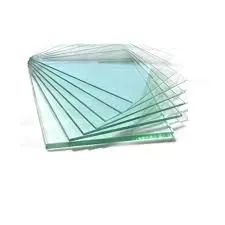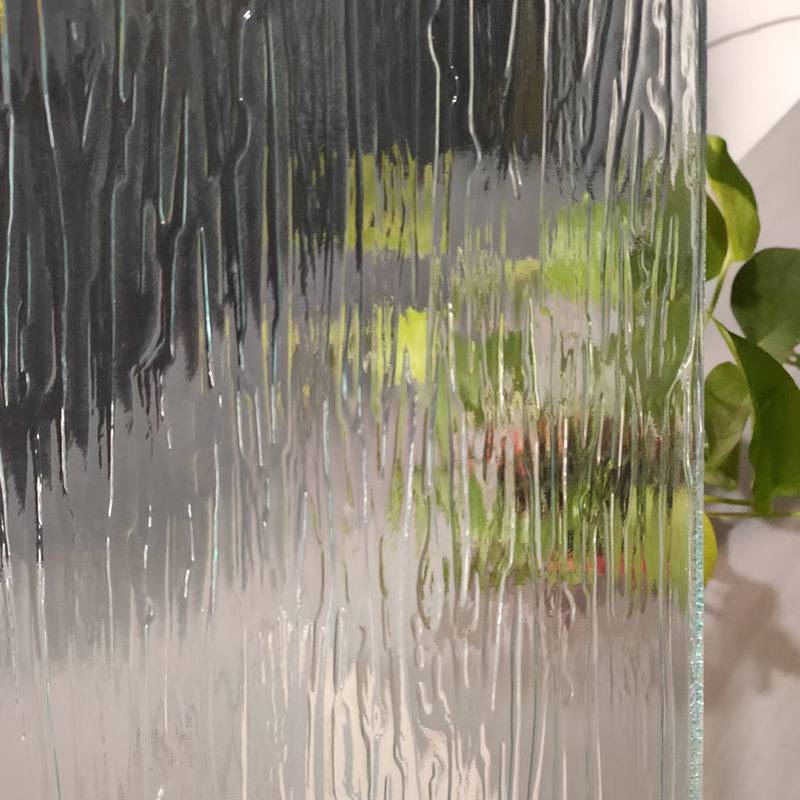- Introduction: The advantage of tempered glass
in modern construction and design.
- Understanding the science and technology behind tempered glass.
- Tempered glass versus laminated glass: A detailed comparison with data insights.
- Comparing top manufacturers of tempered glass: Quality, innovation, and global reach.
- Customization options for various industries and applications.
- Industry-specific case studies highlighting the use of tempered glass.
- Conclusion: Advantage of tempered glass in shaping contemporary spaces.

(advantage of tempered glass)
Introduction to the Advantage of Tempered Glass
In the evolving world of construction, interior design, automotive, and electronics manufacturing, the advantage of tempered glass has become a critical topic. Recognized for its superior durability, safety, and aesthetic appeal, tempered glass outperforms many traditional glass products across a diverse range of applications. According to a 2023 market survey, more than 72% of new commercial architectural projects in Europe and North America opted for tempered or laminated glass due to their enhanced mechanical and thermal benefits. This opening analysis will explore why architects, manufacturers, and consumers increasingly prioritize tempered glass, delving into its physical properties, unique safety features, and the practical reasons behind its surge in popularity.
The Science and Technological Innovation Behind Tempered Glass
Tempered glass is produced by subjecting annealed glass to a thermal tempering process, where it is heated up to 620°C (1148°F) and then rapidly cooled using high-pressure air. This process induces compressive stresses on the surface and tensile stresses in the core, rendering the glass up to 5 times stronger than its standard counterpart. As a result, it is highly resistant to impact, bending, and thermal shock. A major technological innovation lies in the precision cooling technique, which ensures uniform strength distribution and consistent optical clarity.
Data from the Global Glass Manufacturing Association (GGMA) indicates that tempered glass demonstrates a breakage resistance of up to 240 MPa, compared to 40 MPa for standard float glass. Furthermore, in the event of breakage, tempered glass shatters into small, blunt-edged fragments, significantly reducing injury risk. This unique safety feature not only meets but often exceeds the stringent regulatory requirements in construction, automotive, and high-spec electronic screens. Technological advances have also led to scratch-resistant coatings, advanced lamination processes, and improved thermal insulation, further expanding the advantage of tempered glass over earlier generations.
Tempered Glass and Laminated Glass: Performance and Application Comparison
When evaluating tempered glass against laminated glass, it is essential to consider their respective mechanical properties, safety performance, and suitability for various use cases. The following data-rich table highlights the comparative strengths:
| Property |
Tempered Glass |
Laminated Glass |
| Flexural Strength |
100-150 MPa |
50-70 MPa |
| Breakage Pattern |
Disintegrates into small, blunt fragments |
Cracks but held together by interlayer |
| Thermal Resistance |
Shocks up to 250°C in temperature change |
Shocks up to 120°C in temperature change |
| UV Blocking |
Limited (can be treated) |
Up to 99% with correct interlayer |
| Acoustic Insulation |
Medium |
High (due to PVB interlayer) |
| Primary Applications |
Building facades, shower doors, car windows, electronics |
Skylights, building canopies, automotive windshields, security glass |
While tempered glass excels in impact resistance and heat stability, laminated glass offers superior sound insulation and security due to its interlayer construction. The choice between them often depends on the specific functional and regulatory requirements of the application.
Major Manufacturers: Tempered Glass Quality Across the Industry
The global tempered glass market is dominated by a select group of manufacturers renowned for their product quality, research and development, and distribution capabilities. Companies such as AGC Inc. (Japan), Saint-Gobain (France), Guardian Industries (USA), and NSG Group (UK/Japan) lead the sector, each bringing unique process innovations and sustainability commitments.
A 2022 industry report by Glass International highlighted that Saint-Gobain's newly developed Securit® tempered glass panels offered a 12% higher impact resistance and 15% improved optical clarity compared to previous models. AGC Inc. focuses on eco-friendly production, employing up to 30% recycled content in its production lines. Guardian Industries, meanwhile, has pioneered vacuum-insulated tempered glass products, boosting energy efficiency in contemporary building envelopes.
When selecting a supplier, factors such as product portfolio, testing certifications (EN 12150, ASTM C1048), and customization capability must be rigorously assessed. Producer reputation for warranty support, lead times, and technical assistance also play a pivotal role in commercial procurement decisions.
Customization Strategies for Diverse Applications
One of the chief advantages of tempered glass is its adaptability to different design and functional specifications. Manufacturers offer a spectrum of customization services:
- Sizes & Thickness: Glass can be produced in thicknesses from 3mm to over 25mm, with lengths exceeding 5 meters for architectural panels.
- Edge Treatments: From pencil polish to beveled and flat grind, edge profiles enhance safety and visual integration.
- Coatings & Printing: Anti-reflective, low-E, and hydrophobic coatings as well as digital ceramic printing enable precise optical and performance tuning.
- Drilling & Shaping: CNC-milled holes, notches, or complex contours for retail displays, electronics, and high-end partitions.
In the electronics sector, ultra-thin tempered glass can be engineered with
hardness ratings up to 9H on the Mohs scale, vital for smartphones and touch-screen interfaces. For the automotive industry, asymmetric tempering processes support curved windshields with embedded sensors. Each of these customization routes allows industries to extract maximum value from tempered glass technology.
Case Studies: Tempered Glass in Real-World Applications
The practical effectiveness of tempered glass is best illustrated through specific case examples:
- Sky Garden Tower, London (2021): Utilized 8,400 square meters of tempered façade panels, tolerating wind pressures in excess of 4.5 kPa and exposure to daily temperature shifts of over 40°C. No significant panel failure was recorded after 24 months.
- Tesla Model S Windshield: Employs advanced double-layered tempered glass providing better than 110% impact performance over prior models, reducing replacement rates by 36% in 2022.
- Apple Store, Singapore: Features large-format, high-transparency tempered glass with a triple-layer coating system, achieving less than 1% optical distortion in static load environments, resulting in a globally recognized design award.
- Residential Skylights in Scandinavia: Case studies reported lowered thermal loss by up to 18% and a 90% decrease in breakage incidents after upgrading from annealed to tempered glass solutions.
These instances not only demonstrate the adaptability and performance of tempered glass but also underline its growing role in pushing the boundaries of architectural and engineering innovation.
The Enduring Advantage of Tempered Glass in Modern Environments
The advantage of tempered glass becomes apparent through its multifaceted applications, delivering more than just increased strength. Its safety profile, energy efficiency contributions, and capacity for aesthetic adaptation have propelled its integration into the world’s most ambitious construction, automotive, and technological projects.
Market trends forecast annual growth rates of 6.8% for the tempered glass industry, propelled by tightening global safety regulations and sustainability targets. Investments in new coating technologies, smart glass integrations, and digitized quality control ensure that tempered glass products will continue to evolve in line with contemporary demands.
In summary, for stakeholders seeking a balance of safety, design, performance, and versatility, tempered glass consistently stands out as the material of choice, setting new benchmarks for how built environments and modern devices look, function, and endure.

(advantage of tempered glass)
FAQS on advantage of tempered glass
Q: What is the main advantage of tempered glass over regular glass?
A: The main advantage of tempered glass is its superior strength and safety compared to regular glass. Tempered glass is up to four times stronger and shatters into small, less harmful pieces. This makes it ideal for applications requiring enhanced durability and safety.
Q: Why is tempered glass considered safer?
A: Tempered glass breaks into small, blunt fragments instead of sharp shards. This reduces the risk of injury in case of breakage. Its unique breakage pattern is a key safety benefit.
Q: What are the benefits of using tempered glass in building construction?
A: Tempered glass provides higher resistance to impact, heat, and wind pressure. It is commonly used for doors, windows, and facades due to its safety and strength. Its durability also leads to lower maintenance costs.
Q: How does tempered glass compare to laminated glass?
A: Both tempered glass and laminated glass offer increased safety, but tempered glass is stronger against impact. Laminated glass holds together when broken, while tempered glass shatters safely. The choice depends on specific application needs.
Q: Is tempered glass suitable for high-temperature environments?
A: Yes, tempered glass can withstand higher temperatures than regular glass without deforming or breaking. It is often used in oven doors, shower enclosures, and automotive windows. This heat resistance is a significant advantage of tempered glass.
 Afrikaans
Afrikaans  Albanian
Albanian  Amharic
Amharic  Arabic
Arabic  Armenian
Armenian  Azerbaijani
Azerbaijani  Basque
Basque  Belarusian
Belarusian  Bengali
Bengali  Bosnian
Bosnian  Bulgarian
Bulgarian  Catalan
Catalan  Cebuano
Cebuano  Corsican
Corsican  Croatian
Croatian  Czech
Czech  Danish
Danish  Dutch
Dutch  English
English  Esperanto
Esperanto  Estonian
Estonian  Finnish
Finnish  French
French  Frisian
Frisian  Galician
Galician  Georgian
Georgian  German
German  Greek
Greek  Gujarati
Gujarati  Haitian Creole
Haitian Creole  hausa
hausa  hawaiian
hawaiian  Hebrew
Hebrew  Hindi
Hindi  Miao
Miao  Hungarian
Hungarian  Icelandic
Icelandic  igbo
igbo  Indonesian
Indonesian  irish
irish  Italian
Italian  Japanese
Japanese  Javanese
Javanese  Kannada
Kannada  kazakh
kazakh  Khmer
Khmer  Rwandese
Rwandese  Korean
Korean  Kurdish
Kurdish  Kyrgyz
Kyrgyz  Lao
Lao  Latin
Latin  Latvian
Latvian  Lithuanian
Lithuanian  Luxembourgish
Luxembourgish  Macedonian
Macedonian  Malgashi
Malgashi  Malay
Malay  Malayalam
Malayalam  Maltese
Maltese  Maori
Maori  Marathi
Marathi  Mongolian
Mongolian  Myanmar
Myanmar  Nepali
Nepali  Norwegian
Norwegian  Norwegian
Norwegian  Occitan
Occitan  Pashto
Pashto  Persian
Persian  Polish
Polish  Portuguese
Portuguese  Punjabi
Punjabi  Romanian
Romanian  Russian
Russian  Samoan
Samoan  Scottish Gaelic
Scottish Gaelic  Serbian
Serbian  Sesotho
Sesotho  Shona
Shona  Sindhi
Sindhi  Sinhala
Sinhala  Slovak
Slovak  Slovenian
Slovenian  Somali
Somali  Spanish
Spanish  Sundanese
Sundanese  Swahili
Swahili  Swedish
Swedish  Tagalog
Tagalog  Tajik
Tajik  Tamil
Tamil  Tatar
Tatar  Telugu
Telugu  Thai
Thai  Turkish
Turkish  Turkmen
Turkmen  Ukrainian
Ukrainian  Urdu
Urdu  Uighur
Uighur  Uzbek
Uzbek  Vietnamese
Vietnamese  Welsh
Welsh  Bantu
Bantu  Yiddish
Yiddish  Yoruba
Yoruba  Zulu
Zulu 


